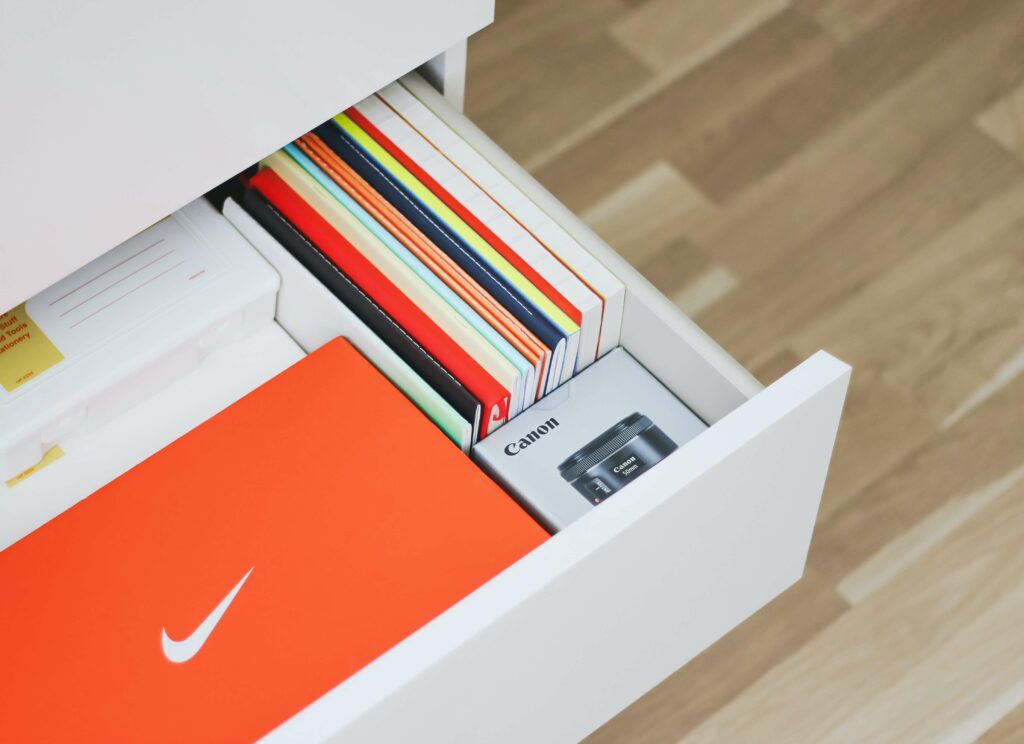
Ball-bearing drawer slides are quite functional, and they come with various features. If you notice that one of your drawers isn’t operating as smoothly as it used to, there might be an issue with its slides. Therefore, it’s important to know how to fix drawer slides with ball bearings.
The ball-bearing function allows smooth and quiet drawer movement. However, due to different reasons, they can get rusty, stuck, loose, or sticky. To fix issues with your ball-bearing slide drawers, you may need to lubricate the bearings or tighten the screws.
Here’s the complete guide and tips on fixing ball-bearing drawer slides that aren’t working properly.
Basically, the ball-bearing slides’ design is based on tiny steel balls caged inside a retainer. When the steel tracks move, they glide across those balls. Consequently, they provide smooth movement and keep the drawer from rubbing against the cabinet that holds it.
Furthermore, each slide consists of three pieces, which are the cabinet piece, the drawer piece, and the intermediate piece. All three pieces are made of strong material, and when compared to ordinary plastic rollers, ball-bearing slides are much more durable.
Ball-bearing slides are easy to install and troubleshoot. They’re also strong and durable. Nevertheless, sometimes they wear out, accumulate dirt, or get sticky. That’s especially when they’re in high-traffic, dusty, or greasy areas.
Luckily, identifying and fixing the issue with ball-bearing drawer slides isn’t complicated. Moreover, there are only a handful of problems causing them to malfunction. Here’s what to do when facing troubles with your drawers:
First things first, you need to know what exactly is causing the issue. To do so, you should remove the drawer from its cabinet and inspect the slides. Typically, this is an essential step, because you can’t take a good look at those slides unless you take the drawer all the way out.
Below are the steps on how to pull out the drawer with ball-bearing slides:
Now that you removed the drawer, it should be easy to figure out what’s wrong with it. Actually, when it comes to ball-bearing slide drawers, there aren’t numerous possible issues. So, identifying the problem doesn’t require much work.
Check out the following suggestions:
After knowing exactly what’s wrong with your drawer, fixing the issue shouldn’t be much of a problem. If you can’t find any jammed objects behind the drawer or between the runners, it may be an issue with the slides themselves.
Usually, lubricating the ball bearings is the easiest and most straightforward fix. In other cases, however, you may need to replace the slides altogether. All in all, these fixes don’t require professional interference, as they’re easy to perform.
Once you repair the slides, it’s time to latch the drawer pack in place. All you need to do is the following:
With constant use, ball-bearing slides usually get crimps and kinks along the rail. This, in turn, causes the drawer to become noticeably harder to move. However, fixing those bends isn’t that challenging. All you need is one tool: needle-nose pliers.
Here are the steps to fix bendy slides:
If the drawer wiggles while moving, it may be due to loose screws. Whether the slide isn’t properly fixed to the drawer itself or to the cabinet, tightening the screws should fix this issue. This is how to fix a wiggly drawer:
This is one of the most common issues causing the drawer to stop opening and closing as smoothly as before. In all cases, you need to regularly clean and lubricate the ball-bearing drawer slides for maximum efficiency.
That’s because drawer slides are prone to dirt accumulating on them. They also can get greasy, especially those installed in kitchen drawers. Not only does cleaning and lubricating drawer slides improve their performance, but it also extends their life.
Moreover, doing so once a year guarantees their functionality and durability. Basically, all you need for this job is a lubricant, a household cleaner, and some dry rags.
Here’s how to clean and lubricate those slides:
Damaged ball-bearing slides may cause the drawer to stop functioning properly or just slide open by itself. In this case, replacing those slides is the way to go, especially if they’re old and warped.
Here are the needed steps to replace old ball-bearing drawer slides:
Depending on the size, depth, and load of the drawer, there are three ways to install ball-bearing drawer slides, which are:
Mainly, there are three types of ball-bearing drawer slides, which are:
Soft-close is the most popular type of drawer slides, as it’s durable and cost-efficient. They can handle a maximum weight of 100 lbs.
The name “soft close” indicates there are hydraulic dampers with springs fixed to the slides. Those dampers prevent the drawer from shutting too hard.
Self-close slides are commonly confused with soft closing. Commonly, this type utilizes a spring-action mechanism that activates at the last inch of closing the drawer. This mechanism is usually smaller than that of the soft-close slides.
Heavy-duty ball-bearing drawer slides are able to hold heavy drawers in place. Impressively, they handle weights of up to 1000 lbs. Obviously, workers use these kinds of drawer slides in workshops and industrial spaces.
Knowing how to fix drawer slides with ball bearings is quite essential because facing issues with them is common. Wiggly, jammed, bendy, or stuttering drawers are all possible problems you can fix by simply tightening the screws and lubricating the slides.
When it comes to more severe damage, it’s better for you and your furniture piece to replace the whole mechanism. Once you figure out how those slides work and what their components are, you should be able to fix any issue or even replace them yourself. However, if you’re not a DIY person, it’s always OK to use the help of a professional.
Why Is My Bathtub Water Yellow? (13 Causes and Solutions!)
How to Get Mud off From Under Truck
How to get Vaseline off your skin